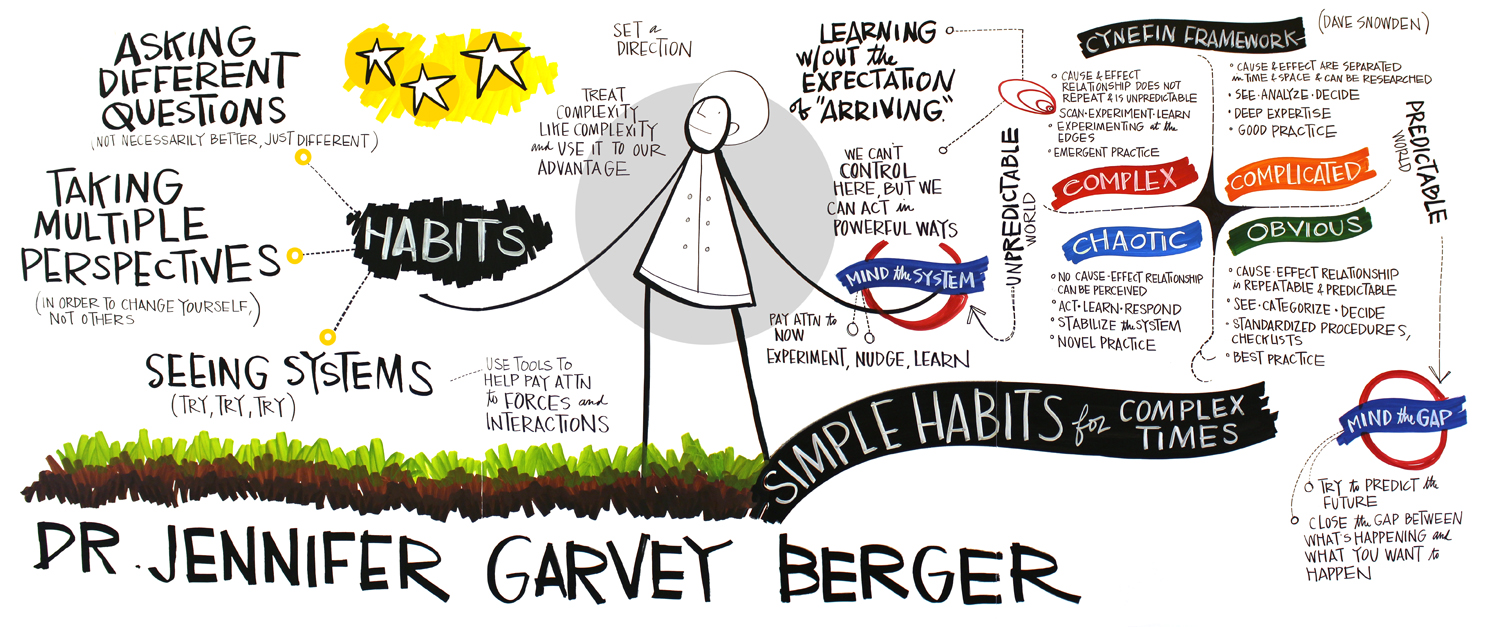 Jennifer reminds us of the Cynefin framework that describes two world states: the predictable world (obvious and complicated) and the unpredictable world (complex and chaotic). DW: I’m reminded that these four “worlds” are both objective and subjective. That is my 7 year old might experience something as chaotic or complex while I might experience it as obvious or complicated. Also, while I also appreciate this framework, where things often get tricky for me is when these worlds become nested – inside a “complex” experience or problem, there often are “complicated” and “obvious” sub-problems. So diagnosing the nature of a problem feels like the right move, toggling between the worlds in real-time is often the big challenge. How to create the spaces, tools, structures that support the skills but also the toggling feels tricky.
Jennifer reminds us of the Cynefin framework that describes two world states: the predictable world (obvious and complicated) and the unpredictable world (complex and chaotic). DW: I’m reminded that these four “worlds” are both objective and subjective. That is my 7 year old might experience something as chaotic or complex while I might experience it as obvious or complicated. Also, while I also appreciate this framework, where things often get tricky for me is when these worlds become nested – inside a “complex” experience or problem, there often are “complicated” and “obvious” sub-problems. So diagnosing the nature of a problem feels like the right move, toggling between the worlds in real-time is often the big challenge. How to create the spaces, tools, structures that support the skills but also the toggling feels tricky.
She noted that most organizations are in the “mind-the-gap” mode (how to move to a predicable goal) to a “mind-the-system” (how to notice the moment and nudge system in a direction). Some key habits include asking different questions, taking multiple perspectives, and seeing systems. DW: Seems like “noticing” is an important skill to these, how to slow down and notice things in new ways that allow questions, perspectives, and systems to be seen.
DW: It strikes me that an element of the performing-learning paradox is that individuals, teams, and organizations are simultaneously living in both worlds. It’s the “or AND and” of how to thrive in chaotic, complex, complicated, and obvious environments. How do we do this?
